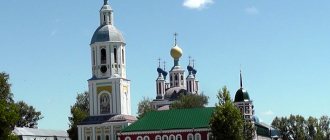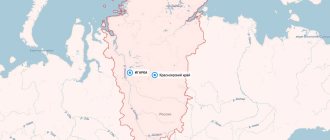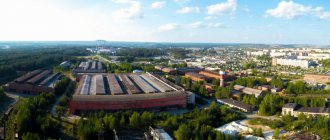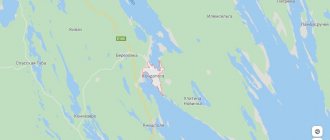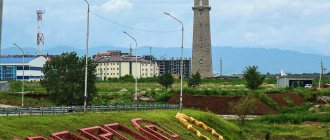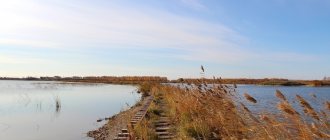Northern calm
Residents of Chukotka give the impression of being rather reserved, not too emotional people. Another interesting trait is slowness. And why rush if everything is nearby? And no one seems to care that, due to the strange boat schedule, you can spend a whole day taking a person to the airport. No one is freaking out, no one is in a hurry. Even the governor walks the streets.
On the right is Roman Kopin, governor of Chukotka.
Anastasia Koryagina, altapress.ru
15 thousand people live in Anadyr - the same number as the Chukchi in all of Russia. For every representative of the indigenous population there are two Russians. There are also mestizos. For many Chukchi, marriage with a representative of another nationality is considered a great success. The mixing of blood, in their opinion, heals the nation.
Previously, the Chukchi practiced group marriages and offered their wives for the night to visiting people of other nationalities in order to conceive a healthy and strong child. Now these customs have disappeared.
Life in Anadyr.
Anastasia Koryagina, altapress.ru
It is believed that there are no drug problems in Chukotka. To put it mildly, importing them is problematic, and hemp does not grow in permafrost conditions. In 2021, the last officially registered drug addict left the Autonomous Okrug.
But alcoholism is thriving. Alcohol in Anadyr can only be purchased until 8 pm, and on certain dates, for example, September 1 or Indigenous Peoples' Day, not at all. There are even villages in the region where the sale of alcohol is officially prohibited, and this was done at the request of the residents themselves. The indigenous population too quickly develops an addiction to alcohol.
Life in Anadyr.
Anastasia Koryagina, altapress.ru
Wikipedia says that Anadyr is located in the border zone, but this is no longer the case. It was removed in June 2021. Now the border zone covers only the islands. This means that now you can fly to Chukotka just like that, without obtaining a pass from the border guards in advance. Residents of Anadyr complain that because of this, the city is already flooded with foreigners and migrant workers.
Life in Anadyr.
Anastasia Koryagina, altapress.ru
Transport[ | ]
The region has a developed transport infrastructure compared to the rest of Chukotka, which was partly helped by the presence of the city of Pevek. Pevek itself has the second largest airport in Chukotka after Ugolny Airport and offers one of the few means of direct travel to Moscow. Pevek has sea connections with other areas of northern Russia, and is the only port in this part of Russia capable of receiving large ships, along with the other main northern port of Cape Shmidt. The port is also the maritime headquarters of the Eastern Arctic during the short summer.
Fishing place
The unemployment rate in Anadyr is low. There are all the administrative and social facilities that should be in the capital of any region. Coal, gold and silver are mined in the surrounding area. Reindeer husbandry, fishing and hunting are developed - this is mostly done by the indigenous population.
Life in Anadyr.
Anastasia Koryagina, altapress.ru
The main production in Anadyr is fish. Here you can buy the freshest chum salmon and caviar, because the fish is caught right within the city limits. The fish factory directly supplies products to the only supermarket in the city and other stores. In addition to salmon, smelt, pike, and whitefish are caught here.
Private traders catch fish with nets. Fishermen gut it right there on the shore, take out the caviar, salt it and pack it. They smoke it here, in the huts.
Fishing place in Anadyr.
Anastasia Koryagina, altapress.ru
Salmon are caught mainly for their caviar, because it can be sold profitably. Many fishermen, having caught a male, immediately throw him back into the sea. After gutting, females can be sold cheaply or given away for nothing. Or they throw it away, although this is prohibited.
It is also forbidden to exceed production standards, but most fishermen violate this prohibition. Poaching is common here, just on a different scale.
Life in Anadyr.
Anastasia Koryagina, altapress.ru
The Chukchi are an indigenous people, just like the Evens, Eskimos and Chuvans living in Chukotka. They can engage in fishing under special conditions, including catching Red List whales. Cunning Russian fish traders take advantage of this - they hire locals to work for themselves under the guise of ordinary fishermen.
Fishing place in Anadyr.
Anastasia Koryagina, altapress.ru
Symbolism[ | ]
Coat of arms
In 2002, the coat of arms of the district was adopted, which was entered into the State Heraldic Register under number 957:
“In a field dissected by azure (blue, blue) and scarlet (red) there is a raised golden bezant (ball), and on top of everything there is a silver bear, standing straight and turned to the right, holding a golden druse in his right paw in front of him, with his left leaning on a golden anchor and accompanied in the upper left corner by a silver four-pointed star lying over the edge of the bezant.”
White nights and cold summers
Anadyr has a harsh subarctic maritime climate. Summer is very short and cool. To a resident of the Altai Territory it may seem as if it doesn’t exist at all, and that it’s just spring smoothly flowing into autumn. On the warmest day of summer this year it was 22 degrees, on the coldest it was 2 degrees.
Weather in Anadyr.
Anastasia Koryagina, altapress.ru
In May-July the “white nights” begin here. The sun sets briefly behind the horizon, but it is still light outside all the time. You will not see the polar night, when there is no sun at all, in Anadyr. It just starts getting dark very early in winter, already at three o’clock in the afternoon. But in settlements located north of the capital, residents experience both the polar night and the polar day.
Weather in Chukotka.
Anastasia Koryagina, altapress.ru
Chukotka cannot be called a sunny region, but still there are more clear days here than in St. Petersburg. Due to its proximity to the sea, Anadyr has high humidity. In summer there is often fog, which dissipates only at 13-14 hours of the day.
The wind blows here all the time, and often cold. Local residents say that Anadyr stands on the seven winds. Because of this, even at +16 people wear jackets. Although there are “walruses” who change into shorts as soon as the sun comes out.
Life in Anadyr.
Anastasia Koryagina, altapress.ru
In winter, because of the wind, they say, sometimes the cold is unbearable. Some people use balaclavas. And in Chukotka there is the concept of “summer hat”.
Contrary to expectations, the northern lights are rare in Anadyr. In order to see this phenomenon in all its glory, it is better to go beyond the Arctic Circle, to the north.
Pevek rules
The city is divided into four microdistricts: Spit (located on the sea spit), Center, Geologist and Fifth Microdistrict. Anastasia notes that Spit is already almost uninhabited and looks quite post-apocalyptic: “Abandoned houses, emptiness, complete silence create the feeling that there is nothing alive left in the world.”
Photo: Anastasia Karpenko
Once a week, citizens stock up on drinking water, since the water from the tap is technical. Drinking water is delivered by tanker trucks to every yard. At certain times, residents go out into the streets with various containers and collect water for the whole family.
“You can only get there by plane”
There is not a single railway or automobile station in all of Chukotka. Because there is no need. There are no railways, and well-maintained roads are built only within populated areas. Tourists mistake the treasury building for the station in Anadyr.
Right down the street is the treasury building in Anadyr.
Anastasia Koryagina, altapress.ru
Most of the settlements in Chukotka are isolated from each other. Near the regional centers there are usually one or two small villages, to which there are dirt roads. In winter, the road network is expanded due to the construction of winter roads.
For short distances, local residents drive SUVs, self-modified all-terrain vehicles (they are often found here) or dogs. In other cases, only by water or air.
Transport in Anadyr.
Anastasia Koryagina, altapress.ru
The Kapitan Sotnikov motor ship goes to some villages of the Chukotka Autonomous Okrug from July to September. He has a special schedule that is not always followed because the weather can be bad. Tickets cost from 4,400 to 7,700 rubles, and these are preferential rates, lower than the cost of transportation. Children under 14 years old can travel at 50% of the cost, and under 7 years old for free.
Intraregional air flights are served by the airline, which flies small An-type aircraft and Mi-8 helicopters. The cost of air tickets to the villages of Chukotka varies from 3 to 12 thousand rubles. All flight numbers begin with the letters AD, and tourists constantly make fun of this at the airport.
Transport in Anadyr.
Anastasia Koryagina, altapress.ru
Air tickets to Chukotka are among the most expensive in the country. For example, I had to fly through Moscow because it was cheaper. A ticket from the capital of the country to Anadyr cost 43 thousand rubles , and back - 28 thousand rubles.
Life in Anadyr, airport.
Anastasia Koryagina, altapress.ru
Life on the edge of the earth
“Chukotka is addictive, you’ll see,” this is how, according to 29-year-old Pevek resident Anastasia Karpenko, she begins to get acquainted with those who find themselves in Russia’s northernmost city for the first time. In response, as a rule, he hears stunned exclamations: “How do you even live here?!” — or questions about when the next plane to the mainland is. This doesn't surprise her at all.
“But after living a little in Pevek, people fall in love with it. You can’t help but fall in love with such natural beauty, the peace and tranquility of this town,” she says.
Pevek residents admit that living in the city is not easy. The prices are very high here. This is due to the difficulties of delivering food to the city. “Even living here permanently, it’s not easy to get used to the high cost of the simplest food products. For example, we can treat ourselves to fruits or vegetables only on holidays. Imagine: apples cost 500 rubles per kilogram. A dozen eggs cost about 300 rubles,” says Anastasia.
Photo: Anastasia Karpenko
“In our city it is customary to go on vacation every two years. This is extremely little. As a rule, tickets are paid for by the organization you work for. A ticket to Moscow costs about 40 thousand rubles; few people in our city can afford to travel to the capital or to the south. Some have to sit for several years in a city where there is a catastrophic lack of sun and warmth. It’s very difficult,” she laments.
Protected natural areas[ | ]
- Nature reserve "Chaunskaya Guba" with an area of 210.5 thousand hectares.
- Geological natural monument "Utiny" (70 hectares) - includes single outliers-kekurs, consisting of porphyro-blastic granites on the spurs of the Veemsky ridge, their height reaches 20 m.
- Botanical natural monuments: “Aionsky” - 13 hectares, “Routan” - 19 hectares, “Pineiveemsky” - 23 hectares.
- Water natural monument Rauchuvagytkyn - 573 hectares, this is a lake of the same name of moraine genesis, the area around which has a multi-colored colorful hue[44].

